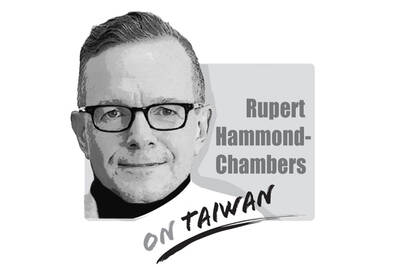The New Party last week announced that it would launch a recall campaign against Taiwan Statebuilding Party Legislator Chen Po-wei (陳柏惟), just days after Kaohsiung Mayor Han Kuo-yu (韓國瑜) was recalled, and by doing so, fired the first salvo in a battle between the two extremes of the nation’s political spectrum.
The New Party openly supports unification with China, while Chen embodies the most radical calls for Taiwanese independence at the Legislative Yuan.
Pitting the two competing political beliefs against each other might not end well for the campaign’s initiator, as the Chinese Nationalist Party (KMT) — the New Party’s big brother in the pan-blue camp — is trying to shed its image as a Chinese Communist Party (CCP) sidekick. The KMT identified this image as a major contributing factor to its defeat in the Jan. 11 presidential and legislative elections.
Besides, a survey released last month by the Academia Sinica showed that 75.3 percent of respondents identified as Taiwanese, while only 4.7 percent identified as Chinese.
The proposed recall campaign would contrast with the one against Han in that Chen, a dark horse in the elections, is very popular among Taiwanese under the age of 45, while Han was practically public enemy No. 1 among people in that age group.
These factors all suggest that it is not the best time for a party long thought to be a CCP proxy to be making waves.
Without the KMT’s support, the New Party is walking a tightrope with its copycat recall campaign, which will further sideline the party on the political scene if it fails to gain enough signatures.
This would probably not alienate the party’s hardcore supporters, but having gained so much attention with its recall campaign, the party has put its reputation at stake. It has placed itself in a do-or-die situation, as it must match its bravado with a successful signature drive. Failure to do so would consolidate the view that the party is becoming increasingly obsolete.
This would hurt its ability to influence the public and its function as a CCP mouthpiece, given that several of its notable members have been pushing the CCP’s “united front work” agenda on social media — for instance, party spokesman Wang Ping-chung’s (王炳忠) Fire News (燎原新聞網) Facebook page and New Party Taipei City Councilor Hou Han-ting’s (侯漢廷) “Yuanshan on the Strait” (遠山看海峽) videos.
The New Party claims that it would be easy to recall Chen, saying that it would be a done deal if 70 percent of the 100,000 people who voted for Chen’s campaign rival, former KMT Legislator Yen Kuan-heng (顏寬恆), voted to oust Chen.
However, the party could not even land a single legislator-at-large seat in the Jan. 11 presidential and legislative elections after it failed to pass the 5 percent threshold for party ballots, garnering only about 1 percent of the votes.
With such abysmal popularity, even if it managed to gather enough signatures to carry the recall campaign through the first stage, it would find it hard to pass the second stage, which would require at least 29,000 signatures, judging by the size of Chen’s constituency of 290,000 people.
Asked to comment on the recall campaign, Chen seemed unfazed, citing his 100 percent attendance at legislative meetings.
Now the ball is in the New Party and Yen’s court. It is worth watching whether the former will go through with its challenge and whether the latter will risk teaming up with a “red” party by openly supporting a recall campaign against Chen.

In the past month, two important developments are poised to equip Taiwan with expanded capabilities to play foreign policy offense in an age where Taiwan’s diplomatic space is seriously constricted by a hegemonic Beijing. Taiwan Foreign Minister Lin Chia-lung (林佳龍) led a delegation of Taiwan and US companies to the Philippines to promote trilateral economic cooperation between the three countries. Additionally, in the past two weeks, Taiwan has placed chip export controls on South Africa in an escalating standoff over the placing of its diplomatic mission in Pretoria, causing the South Africans to pause and ask for consultations to resolve
An altercation involving a 73-year-old woman and a younger person broke out on a Taipei MRT train last week, with videos of the incident going viral online, sparking wide discussions about the controversial priority seats and social norms. In the video, the elderly woman, surnamed Tseng (曾), approached a passenger in a priority seat and demanded that she get up, and after she refused, she swung her bag, hitting her on the knees and calves several times. In return, the commuter asked a nearby passenger to hold her bag, stood up and kicked Tseng, causing her to fall backward and
In December 1937, Japanese troops captured Nanjing and unleashed one of the darkest chapters of the 20th century. Over six weeks, hundreds of thousands were slaughtered and women were raped on a scale that still defies comprehension. Across Asia, the Japanese occupation left deep scars. Singapore, Malaya, the Philippines and much of China endured terror, forced labor and massacres. My own grandfather was tortured by the Japanese in Singapore. His wife, traumatized beyond recovery, lived the rest of her life in silence and breakdown. These stories are real, not abstract history. Here is the irony: Mao Zedong (毛澤東) himself once told visiting
When I reminded my 83-year-old mother on Wednesday that it was the 76th anniversary of the founding of the People’s Republic of China, she replied: “Yes, it was the day when my family was broken.” That answer captures the paradox of modern China. To most Chinese in mainland China, Oct. 1 is a day of pride — a celebration of national strength, prosperity and global stature. However, on a deeper level, it is also a reminder to many of the families shattered, the freedoms extinguished and the lives sacrificed on the road here. Seventy-six years ago, Chinese Communist leader Mao Zedong (毛澤東)